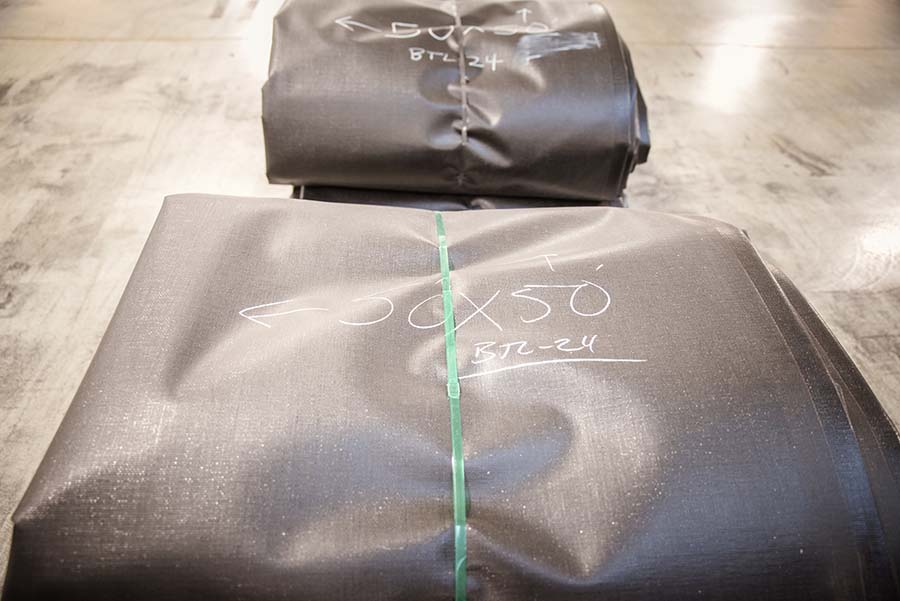Article Center
The Basics of Retention Ponds
Retention ponds are often as simple as holes dug in low lying dirt areas but can also reach high levels of complexity with multiple compartments, advanced filtration systems, and extensive overtopping protection for floods.
Protecting Fish from Predators and Self-Feeding
Fish fry are a primary food source for a wide range of amphibians, insects, animals, and even the fish themselves.
The Question of Fertilization and Other Treatments for a Nursery Pond
Fertilizer is generally thought of as something limited to use on land. However, nursery ponds for raising fry and fingerlings are fertilized prior to the addition of new fish.
Feeding Fry to Fingerling Stages of Growth
Feeding fry properly is the single most challenging part of running a nursery pond. Fry are not easy to feed, and even a steady supply of phytoplankton and other tiny lifeforms can suddenly disappear overnight or fail to keep them thriving.
Which Liner Material is Right for a Nursery Pond?
Don’t underestimate the number of options you have for lining a nursery pond, even after you decide you want a flexible geomembrane.
Liners to Prevent Water Loss in Nursery Ponds
While few fish pond owners would try to building rearing or feed-out ponds without a solid liner, these materials are also needed for nursery ponds.
Flow and Water Change Requirements for Nursery Ponds
Like all fish rearing ponds, nursery ponds require a steady supply of conditioned fresh water and routine water changes.
Letting Nursery Ponds Dry Between Seasonal Uses
Traditional use of open nursery ponds involved drying out the pond at the end of the season.
Nursery Requirements for Specific Species of Fish
Nursery ponds are used for many different types of fish who need an open environment with a natural food supply and high water quality.
How Nursery Ponds Work
Nursery ponds are a subset of rearing ponds that house fish during the most delicate and difficult stages of growth.
Connecting Algae Ponds Directly to Aquaculture
For a food production system creating both vegetable and animal proteins at once, try combining an algaculture setup with an aquaculture business. Growing feed for the fish or crustaceans on-site greatly reduces
What’s Needed for Rapid Algae Growth?
Algae doesn’t need the same water quality or conditions that plants and fish require. However, each species still has a set of conditions needed for rapid growth and profitable harvests.
Risks of Algaecide from Liner Materials
Before you install any old pond liner you can find in your new algae ponds, check out the material. Many pond liners, even those that are fish-safe and plant-safe, feature algaecide treatments to control the growth of these tiny plants.
The Importance of Pond Liners for an Algae Pond
Pond liners aren’t optional for algae ponds. While you may be able to grow fish or plants in mud-bottomed or clay-lined ponds, this won’t work for commercial algae production.
Designing Open Algae Ponds
It’s not enough to simply dig a pond, fill it with water, and sprinkle in an algae sample. Open ponds used for algaculture need constant water mixing, the appropriate depth, and accurate projections of the water evaporation and loss rates.
Open vs Closed Production Algae Systems
Algae is either produced in an open production system or a closed one. Bioreactors and sealed containers make up the closed category, while all other ponds, tanks, raceways, and tubs fall into the open category.
Types of Cultured Algae
There are thousands of distinct algae varieties that are purposefully cultivated around the world.
Uses for Algae
Algae serves many purposes in both traditional cuisine and modern manufacturing processes. Exploring the uses for various kinds of micro- and macroalgae will help you choose the right variety for your system.
5 Tips for Maintaining Your Koi Pond
Once you’ve built the koi pond of your dreams, you can keep it looking good and requiring few repairs with some basic maintenance steps.
Choosing Filtration Methods for a Koi Pond
Each fish produces plenty of waste in the form of ammonia, which is then broken down by bacteria and oxygen into nitrites and then subsequently broken down into nitrates.
What Pond Liners are Best for Koi Ponds?
Proper pond liner selection is crucial for koi ponds. While many plants will grow in practically any kind of liner, fish are much more sensitive to chemicals that can leach out from specific flexible and rigid materials.
Designing a Koi Pond That’s Easy to Maintain
Now that you know the basics of sizing and designing a koi pond, there’s still a few factors to consider in your project.
Protecting Your Fish from Predators
If you’ve never had fish living in your yard or near your business, you may have never seen the many predators that love to snack on expensive koi.
Picking a Pond Size Based on the Koi You Want to Keep
You’re free to design a koi pond based around the available space in your backyard and then calculate how many fish will fit in that space.



























